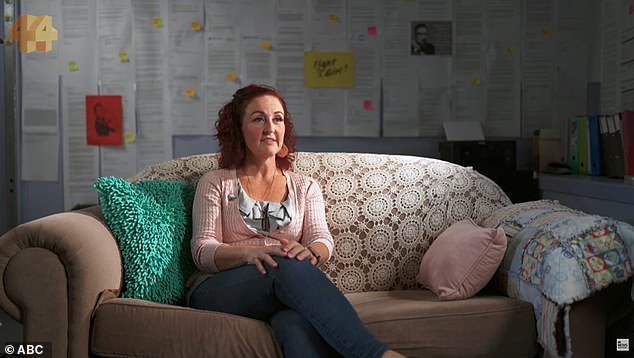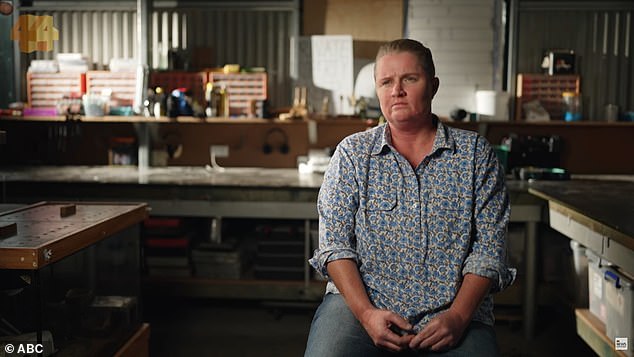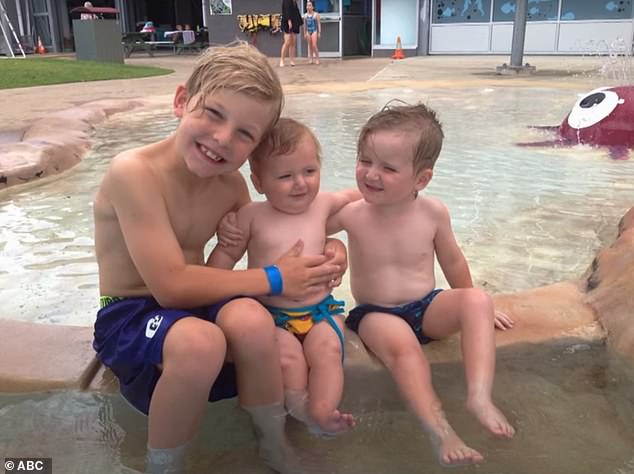A couple has accused a leading IVF clinic of using the “wrong sperm” after their two youngest children developed serious health complications and they discovered they were not related to their eldest son.
Anastasia and Lexie Gunn conceived three children through donor sperm at the Queensland Fertility Group (QFG) between 2006 and 2014.
The couple had paid for sperm from the same donor for all three children, but later discovered that the eldest was not related to his two younger brothers after hundreds of hours of painstaking research.
‘It’s a catastrophic mistake… How could they have used the wrong sperm to have children?’ Anastasia said.
“We had IVF and got the wrong sperm,” Lexie added.
“He has shattered what we all believe to be true.”
The revelations come as part of a major investigation by ABC’s Four Corners into Australia’s immensely profitable IVF industry.
Anastasia told the show that they had been very careful in choosing the right donor and settled on Donor 227, who was advertised as a healthy, fit white man who was between 25 and 30 years old.
“I was definitely concerned about my medical experience,” she said.
Four years after the birth of their first child, they decided to have more children and contacted QFG to see if they could use the same donor.
“We wanted everyone to have the same biological father to unite them, so that when they had children, all their children would be united by their biological history,” Anastasia said.
The clinic told them they could use the same donor and they ended up having two more children.
But both children suffered serious health complications from birth.
They were diagnosed with Ehlers-Danlos syndrome, which causes very flexible joints and fragile skin, while the youngest was also diagnosed with autism and ADHD.
Concerned about the number of health problems, the couple tried to find out if any other children of donor 227 had similar problems, so they submitted their children’s DNA to an ancestry website.
But the results surprised them when they discovered that their eldest son was not biologically related to their two youngest.
“I was completely stumped,” Anastasia said.
“I could see there was no overlap between our oldest son and our two youngest.”
Anastasia and Lexie Gunn conceived three children through donor sperm at the Queensland Fertility Group (QFG) between 2006 and 2014 (pictured). But they were horrified to discover that their eldest was not biologically related to his two younger brothers.
QFG doubted the reliability of the DNA results, so the couple used a DNA testing laboratory used by the Family Law Court, which returned the same results.
“(QFG) has not provided any answers to that legal DNA testing,” Anastasia said.
“They have not offered any justification.”
The couple is currently suing QFG in a bid to hold the fertility clinic accountable.
Lexie said she would even go so far as to sell her kidneys to fight the case.
“I think it’s very dangerous to underestimate all mothers, but especially mothers of children with disabilities,” she said.
“I think they’ve messed with the wrong women.”
The clinic told the program that its records showed the same donor was used for all three children.

The couple had paid for the same donor sperm for all three children, but later discovered that the eldest was not related to his two younger siblings after hundreds of hours of painstaking research (pictured: Anastasia).
In a statement posted on its website, QFG said it “recognised the difficulties the Gunns have faced since we helped them start their family and we look forward to working with them to find a mutually acceptable solution.”
However, he said he could not comment further because the case was before the courts.
QFG is owned by Australia’s largest IVF provider, Virtus Health.
The program also spoke to three mothers who used the same sperm donor and whose children were subsequently diagnosed with a variety of autism-related disorders.
The mothers asked the clinic to share information about their children’s health problems, but initially insisted that there was no clinical requirement to notify other patients.
Despite the health problems, QFG continues to use the donor to conceive more children.
“It’s still being sold as probably top-notch Australian sperm,” one of the concerned mothers told the programme.
‘I just don’t understand how they can create children with something that has a higher chance of becoming a disability. It’s just money. It’s all it is.’
QFG said in a statement that in 2023 another family who had used the same donor informed them that their children had been diagnosed with autism.
“The designated clinical geneticist reviewed the three cases and then recommended that families in which the donor had conceived people from the donor should now be informed of the diagnosis and that the donor sperm should only be available for family extension,” said a clinic spokesperson. .
They added: “As of November 2023, we had informed all donor-conceived patients of the clinical diagnosis of autism.”

Lexie Gunn (pictured) and her wife are suing Queensland Fertility Group. “I think they’ve messed with the wrong women,” Lexie told Four Corners.
The show also spoke to a woman who discovered she could have up to 700 half-siblings because her biological father was a prolific sperm donor.
Katherine Dawson, 34, discovered that poor vetting practices allowed her biological father to donate to a variety of clinics during the 1980s under different names, thus generating different donor codes.
Back then, donors could be paid $10 per donation and could donate multiple times.
But today it is illegal to pay a donor and you are usually only legally allowed to create between five and ten families.
“I think there were seven (names), including his,” Katherine says of her donor father.
“So if you go to 10 different clinics and hospitals, like he said he did… I estimate there could be up to 700 siblings.”
The clinic said that “current donor screening processes have changed enormously since then and would prevent this from happening today.”
They wrote to the recipient families and almost two-thirds received the letter.
“We are continuing our efforts to contact recipient families who did not respond to our original letter, so that we can disclose all relevant health information related to this donor,” the statement added.


